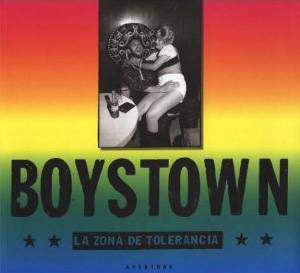


SPRING — SUMMER 2001
BOYSTOWN: La Zona de Tolerancia
SOUTHWESTERN & MEXICAN PHOTOGRAPHY COLLECTION
Boystown: La Zona de Tolerancia is the fourth publication in the Wittliff Gallery Series. The book includes essays by Keith Carter, Christina Pacheco and Dave Hickey, with an afterward by Bill Wittliff. The book can be purchased through The Wittliff Shop.
...The photographers of La Zona were not trying to make art, to make a social statement, to document an era, or to present a personal viewpoint. They were trying to make a buck in a hard world. Yet, seen together, these images far surpass theirmakers' limited intentions. Raw and unadorned, they were never meant to be what they have become: a merciless documentation of a place and a time. It is easy to imagine the original photographs being torn up and thrown away on some stretch of the long, sober highway leading home. But these negatives survived, and the images, made with such a basic intent, now seem limitless in interpretation.
—KEITH CARTER
The City of Pleasure is as real as any other, but it's not on any map, nor in any of the guidebooks that steer tourists through unknown waters... It goes without saying that on the roadsides there are no historical markers to note in what year it was founded or how many miles away from the traveler its walls might be... It is not ancient, only old, and as universal as is the impulse to invent love and to wield power....
—CHRISTINA PACHECO
The camera's eye... delineates the tawdry ephemerality of the setting... In its coldness, the camera creates a dramatic situation in which the image affirms what the subject seeks to deny or ignore, and this sets these photographs apart from the French pictorial tradition that they unconsciously aspire to mimic. Without the French practice of portraying la vie boheme as a glamorous alternative to bourgeois existence, these photographs would probably not exist. Yet, when an image shows us things that its human subjects cannot or will not see, we enter the older, colder tradition of vanitas pictures initiated by Caravaggio, Velázquez, and Murillo at the height of the Counter-Reformation....
—DAVE HICKEY
- Facebook
- Twitter
- Instagram
- Youtube
Email List